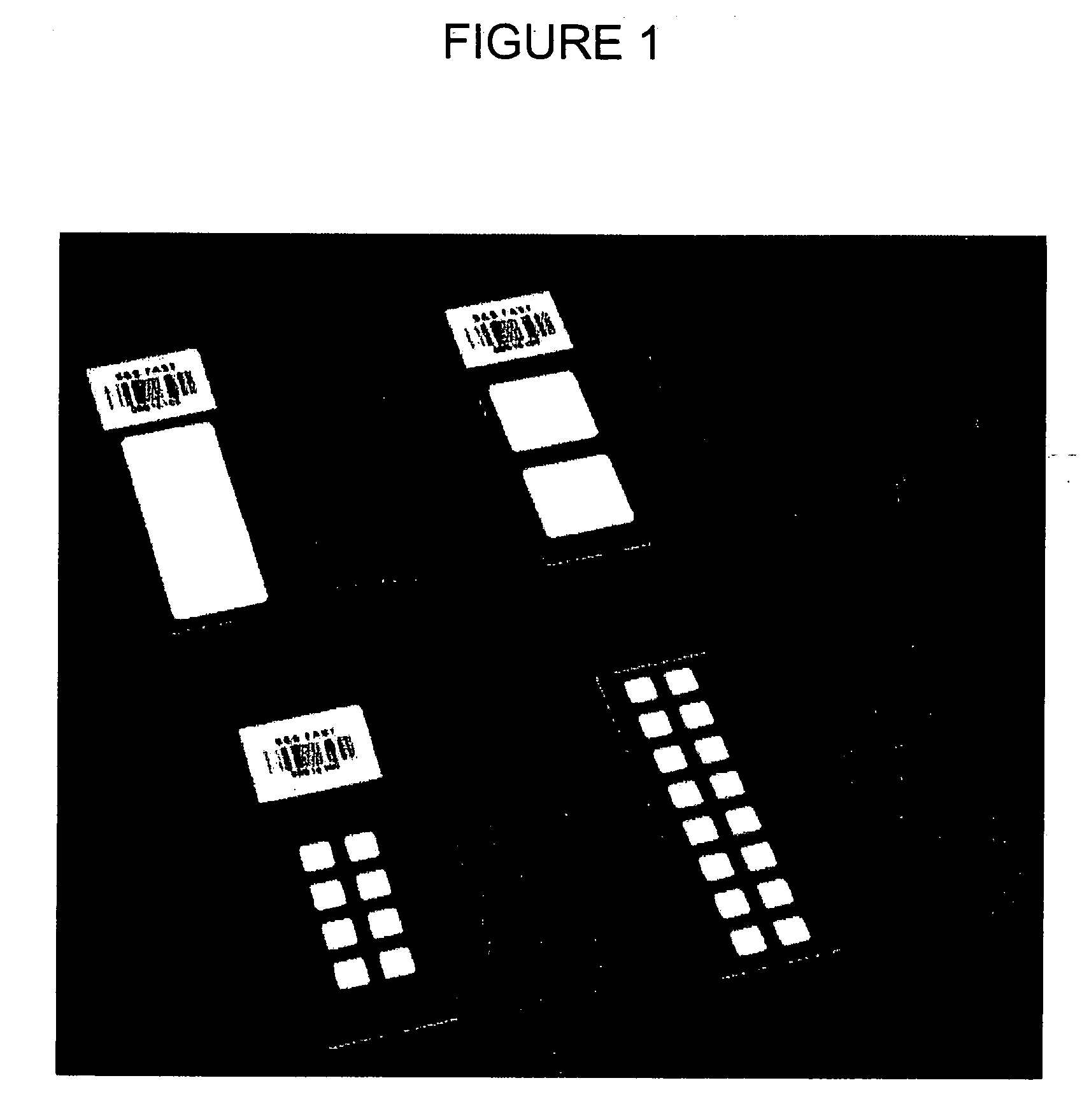Protein microarray device having internal calibrators and methods of using therefor
a technology of microarrays and calibrators, which is applied in the field of protein microarray devices having an internal calibrator, can solve the problems of reducing the number of sample volumes, reducing and reducing the difficulty of generating and validating high density protein arrays for clinical use, etc., and achieves the effects of reducing sample volumes, high variability, and increasing the power of parallel processing
- Summary
- Abstract
- Description
- Claims
- Application Information
AI Technical Summary
Benefits of technology
Problems solved by technology
Method used
Image
Examples
Embodiment Construction
[0029] In preferred embodiments, the present invention relates to a device for preparing multiple assay samples. A preferred embodiment is shown in FIG. 1. The device comprises a standard-sized glass microscope slide (75 mm by 125 mm), comprising a planar support having a set of exterior edges and a planar surface covered with sixteen separate and discretely spaced pads. Each pad has a number of protein arraying spots deposited thereon in distinct patterns. The pads are present at a density and spacing that is registerable with that of a standard 96 well microplate or other conventional microplate formats such as 24 wells, 64 wells, and 384 wells. The device can comprise a series (4) of slides held in a holder sized to the dimensions of an SBS standard multiwell microplate, in this illustration a 96 well microplate having a 9 mm spacing format.
[0030] The pads can be constructed of a protein binding material that is disposed on the support slide. Suitable materials include microporo...
PUM
| Property | Measurement | Unit |
|---|---|---|
| thick | aaaaa | aaaaa |
| thick | aaaaa | aaaaa |
| diameter | aaaaa | aaaaa |
Abstract
Description
Claims
Application Information
 Login to View More
Login to View More - R&D
- Intellectual Property
- Life Sciences
- Materials
- Tech Scout
- Unparalleled Data Quality
- Higher Quality Content
- 60% Fewer Hallucinations
Browse by: Latest US Patents, China's latest patents, Technical Efficacy Thesaurus, Application Domain, Technology Topic, Popular Technical Reports.
© 2025 PatSnap. All rights reserved.Legal|Privacy policy|Modern Slavery Act Transparency Statement|Sitemap|About US| Contact US: help@patsnap.com



